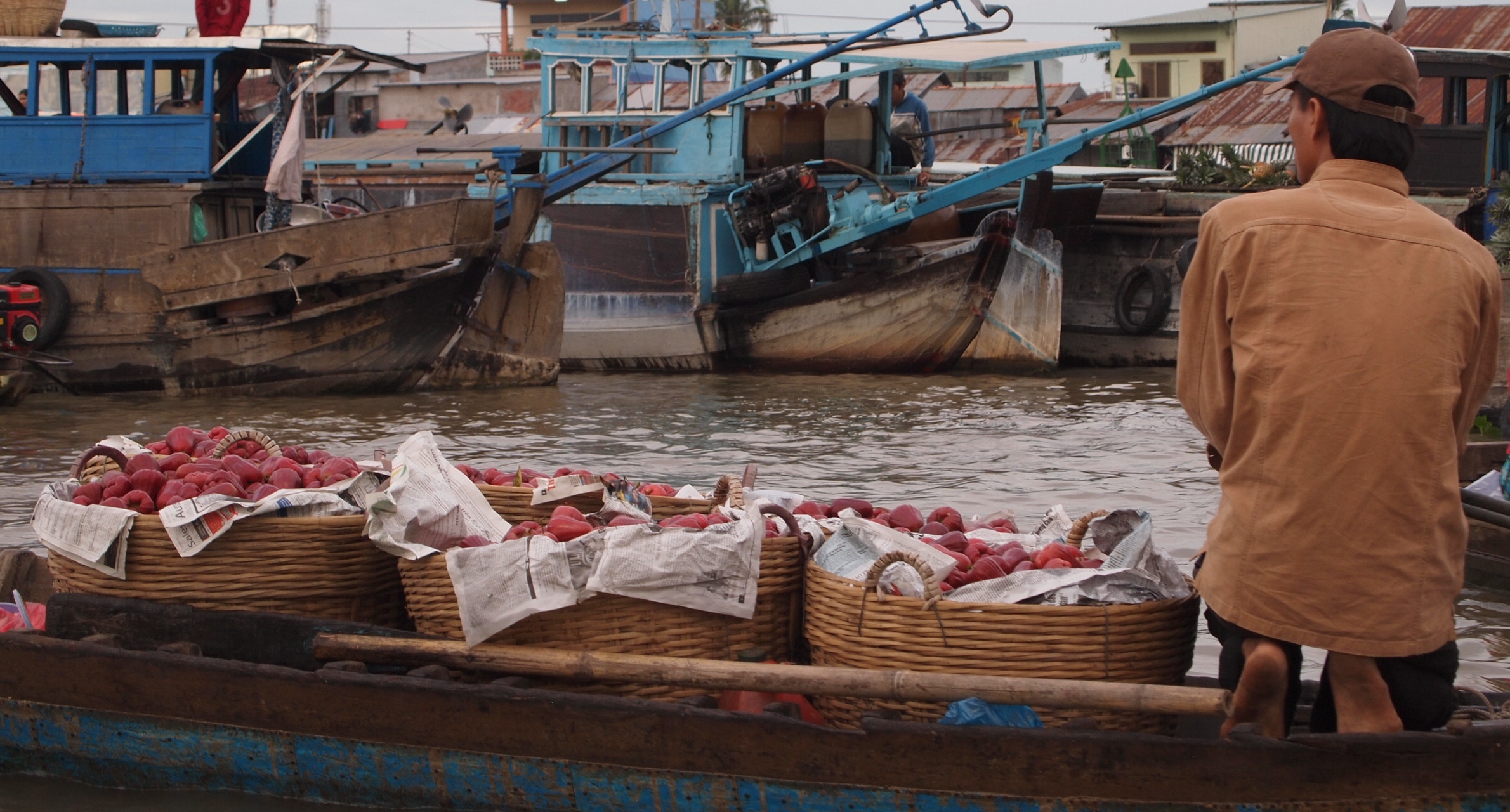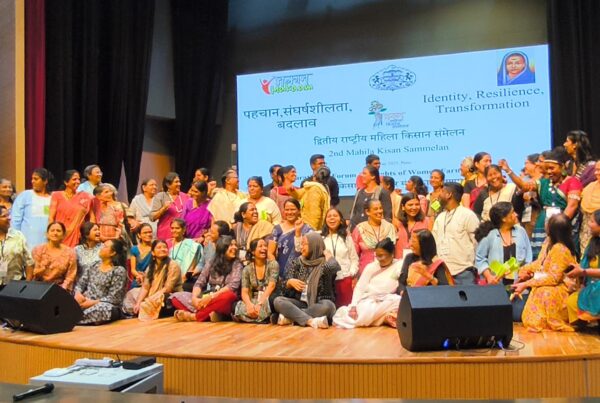by Panagiota Kotsila
About a year ago, journalist Rose George gave a TED-talk about sanitation and diarrhoea in which she invited people to “talk crap, seriously” and got almost 1.5 million views. Today, after four years of researching this topic, I realize we need to question George’s speech. It is indeed a frustrating reality that she is drawing attention to: “diarrheal disease kills more children than AIDS, tuberculosis and measles disease do, together”. This is happening despite the fact that there exist ways to prevent and treat this disease and the global health community is well aware of them (see for example this booklet by UNICEF and WHO).
Even though the discussion opened by George is certainly important, many empirical studies (including my own) have shown that abolishing open defecation is not synonymous to eradicating diarrheal diseases. Construction of more toilet facilities is not necessarily going to help people develop healthy behaviours. In order to promote any kind of change, we need to consider and respect the realities and histories in which people’s knowledge(s) -about their bodies, their health and their environment- are situated. In illustrating this argument, I will draw on three points.
Point #1: Disease is political
In the video above, George talks about toilets as a privilege to those in a position to attain it. Throughout her talk she draws an implicit line between sanitized and non-sanitized places, which is parallel – if not coincidental- with the line between rich and poor countries. Without wanting to disregard the global injustice in how wealth and poverty is distributed geographically, I would ask what defines vulnerable versus powerful, exposed versus protected, and wealthy versus poor people within such countries?
One of the arguments that emerge from George’s talk is that sanitation and health are principally matters which can be resolved by speeding up along a pre-defined road to development – with people discovering what the “wonderful Victorian engineers” discovered, and being convinced to build and use the flush latrine.
Findings from Vietnam, where I conducted my research, show how these types of approaches often fail to achieve their proclaimed public health goals. Vietnam officially exited poverty in the 1990s and has shown sustained economic growth ever since. However, there are still 1.5 million documented annual cases of acute diarrhoea, over the last decade; a figure not far from what was noted before the country’s economic upheaval of the 1990s. And this despite statistics that report a sharp rise in the percentage of people with access to improved water and sanitation. So, why hasn’t development prevented more people from getting sick?

A bust of Ho Chi Minh, the Vietnamese flag and the stick of a local officer placed on his desk in an urban commune of the Mekong Delta. Source: the author, 2011.
Access to resources and services are affected by power relations, which manifest in class, gender and ethnic inequalities. Judging by George’s work (see for example her book chapter on scavengers in India), she is more aware of the political nature of disease than her TED-self allows us to see. While she talks about the need to overcome the shame of talking about shit and about latrines, she does not discuss the need to question the socio-political systems that disallow free access to safe water and sanitation, nor the governments that disregard minorities and the bureaucracies that prioritise their own institutional power over public (health) concerns. (On losing the fear to open those kinds of questions, see this post by Erik Swyngedouw).
Point #2: Latrines alone cannot solve the problem of unsafe water consumption
Comparing world budgets, George is pointing to sanitation as a comparatively under-funded sector in the global water and sanitation budget. This is irrational, according to her, because clean water is not enough to prevent disease occurrence, while good sanitation would. However, one needs to point out that clean water access is also still a desired future and not a lived reality for namely 780 million people in the world (for more detailed accounts, see the GLASS report 2012).

Living in a floating boathouse includes collecting surface river water and storing it for future drinking or daily use. Source: the author, 2011.
On the one hand, intra-household water contamination and digestion of diarrheal pathogens is more associated to people’s hygienic practices (manner of collecting and storing water, water treatment in the household, preparing food, cleaning utensils, washing hands), than the presence or absence of latrine. On the other hand, latrines without adequate collection and treatment systems do not help towards environmental sanitation. In the example of the Mekong Delta, many households simply redirect their sewage from their flush latrines into the river.
Point #3: Persuading is neither empowering nor sustainable
Whereas George admits to the social complexities of changing sanitation habits, she hints merely to the need for persuasion. “The idea is to manipulate human emotion”, she says. “It’s been done for decades. The soap companies did it in the early 20th century. They tried selling soap as healthy. No one bought it. They tried selling it as sexy. Everyone bought it”. In other words, let the educated and hygienic us, show them how to be clean and sanitary using the flush latrine.
The saying “old habits die hard” exists also in Vietnam (Đánh chết cái nết không chừa) and was often used by local officials to justify people’s use of contaminated water, open defecation and the incidence of disease itself. Indeed, much of the health education campaigns prioritise modes of persuasion, using feelings of shame, fear and guilt, without offering a relevant framework upon which local people can evolve their understanding of disease-causing factors and preventive measures.
But, in Vietnam there is also the saying, “she that knows nothing, doubts nothing” (Điếc không sợ sung). If one cannot understand the sources and cycles of local water pollution, they will not question why governments are reluctant to move towards wastewater treatment regulations. If one is also not aware of the safe way to construct and use low-cost household systems of water treatment or sanitation, they will not question the lack of such alternatives in official policies and discourse. Truly participatory, inclusive and contextualized health education is a tool of empowerment for communities and individuals.

A fishpond toilet over the water made of by bamboo sticks and metal scraps. One has to balance on the bamboo “bridge” to be able to use the toilet. Source: Dunja Krause, 2012.
If I hadn’t experienced some of the nuances behind the striking facts and numbers that George presents, I would have come out of her talk feeling upset. But the premise of my frustration would have been focused on the question of ‘why can’t we convince people to invest in, build, and use toilets’, and thus it would be a largely misplaced criticism. The message missing in discourses like George’s is that in a world of fast-paced and diverse socio-ecological change, health challenges need to be addressed through equally diverse and engaging ways of assimilating new knowledge into already existing systems of understanding.
The result of this work is a monograph entitled “Socio-political and Cultural Determinants of Diarrheal Disease in the Mekong Delta. From Discourse to Incidence”.






Thank you for this blogpost. It is a rarity to find critical scholars engaging with sanitation. Most sanitation advocates are pragmatists, not critical activists. Faced with the lack of attention of many governments and the little public funding made available for public sanitation systems, they prefer to focus on individual toilets. The idea that ‘a toilet’ is better ‘no toilet’ seems appealing, even if this toilet directly discharges into the open environment and probably into someone else’s drinking water source. The response to these larger challenges is usually one of “you have to start somewhere”. The use of terms like “convincing”, “selling” and “educating” seems dubious, but sanitation advocates somehow justify this by pointing towards the expected health outcomes, environmental benefits and economic spin-offs.
Sanitation, like disease is indeed political. Interventions that actually lead to the safe containment, transport and treatment of faecal matter need public responsibility and public funding. Funding that is now largely reserved for city centres and business districts. Changing this status quo would at least require an engaged public, politicians with long-term vision and affordable financial instruments for districts and municipalities.
I do agree with you that disease is political and that latrines alone will not lead to a decline in diarrhoea. However, I do not agree with you that health challenges can be addressed by “assimilating new knowledge into already existing systems of understanding”. Neither do I agree with sanitation advocates like George that assume that large statistics will move the world into action (action by who and for who?). If we embrace that sanitation is political we must also embrace that some stand to lose, while others gain. We must acknowledge that change will not happen through ted talks, articles in academic journal, blogposts (including its replies) or NGO leaflets. We must also recognise that sanitation interventions will go hand in hand with further state control over an area, in some cases even reshaping of the public space.
I don’t have many answers to these issues. If you’re serious about sanitation and/or diarrhoea you have to roll up your sleeves and get in the thick of it. But don’t expect to deal with shit and walk away clean.
Thanks a lot for your comments. I also think that if positions like that of George motivate any kind of action, that is probably one of donating to a sanitation-constructing aid organisation of a sort, and thus, very limited change in the status quo of access inequality (to clean water, sanitation or health services). Regarding the point of coupling new knowledge with existing understandings, please let me know what is the core of your disagreement?
What I argue is that George totally misses the importance of different cultural understandings of disease. Disregarding this (like her, many epidemiologists, intervention practitioners and organisations) means not being able to provide any kind of advice or help that will be meaningful, and thus useful, to people who need it. As Leonard Syme puts it, “we in public health have important messages to give to people, but people have lives to lead. There often is a major gap between these two priorities”. Health education doesn’t have to be didactic or imposing, it can be empowering. But for this it needs to start from the perceived and lived realities of people, not in spite of them. Including bodily views and ideas that might disagree with biomedical understandings of health, is I believe crucial in this process.
Unless your disagreement is more against the “new knowledge”. My experience from studying disease in South East Asia, is that some change in practices has contributed to the prevention of disease morbidity and mortality. This can be a mosquito net or a hand-washing habit. Recognising the complexity of reasons why for instance, mosquito populations increase, vaccines are not available, water is dirty, in certain places and not in others -which should be part of health education- I cannot deny that conveying knowledge on timely practical solutions can be extremely useful. Local systems of understanding disease should not be seen as a barrier to this, but as an opportunity to understand the situated expressions of disease and the (locally possible, socially acceptable and medically different) ways to prevent and treat it.
So, I guess I am more in line with Wallerstein and Bernstein (1988) who take Paulo Freier’s approach to education and adapt it to health, defining empowerment as “a social action process that promotes participation of people, organisations, and communities in gaining control over their lives in their community and larger society”. In this regard, the goal of empowering health education is to bring individual and collective structural change, through promoting community organisation and control over circumstances that -people realize- affect their health.
I understand there is a lot of scope for discussion here, and thanks again for opening it. I am eager to hear more thoughts.